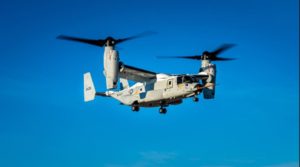
Bell [TXT]/Boeing [BA] V-22s Osprey tiltrotor aircraft across the Navy, Marine Corps and Air Force are getting time limits and some aircraft are being grounded due to an engine clutch issue, pending replacement parts and a longer term fix. The V-22 Osprey Joint Program Office (JPO) (PMA-275) recommended time limits to the three services that use the aircraft to minimize damage, which they have enacted. The problem is tied to the input quill assembly, a part of the proprotor gearbox…

 By
By 









